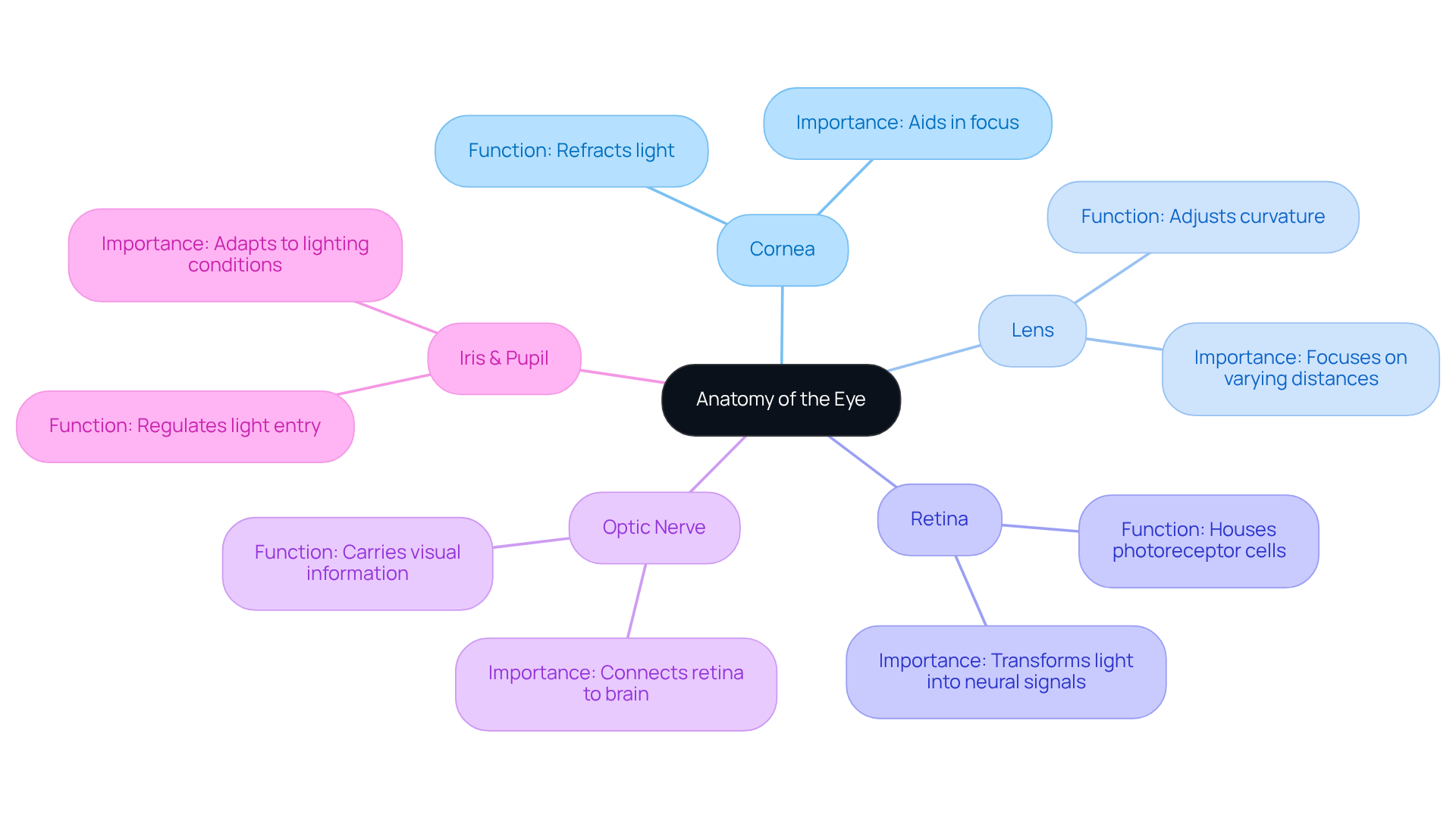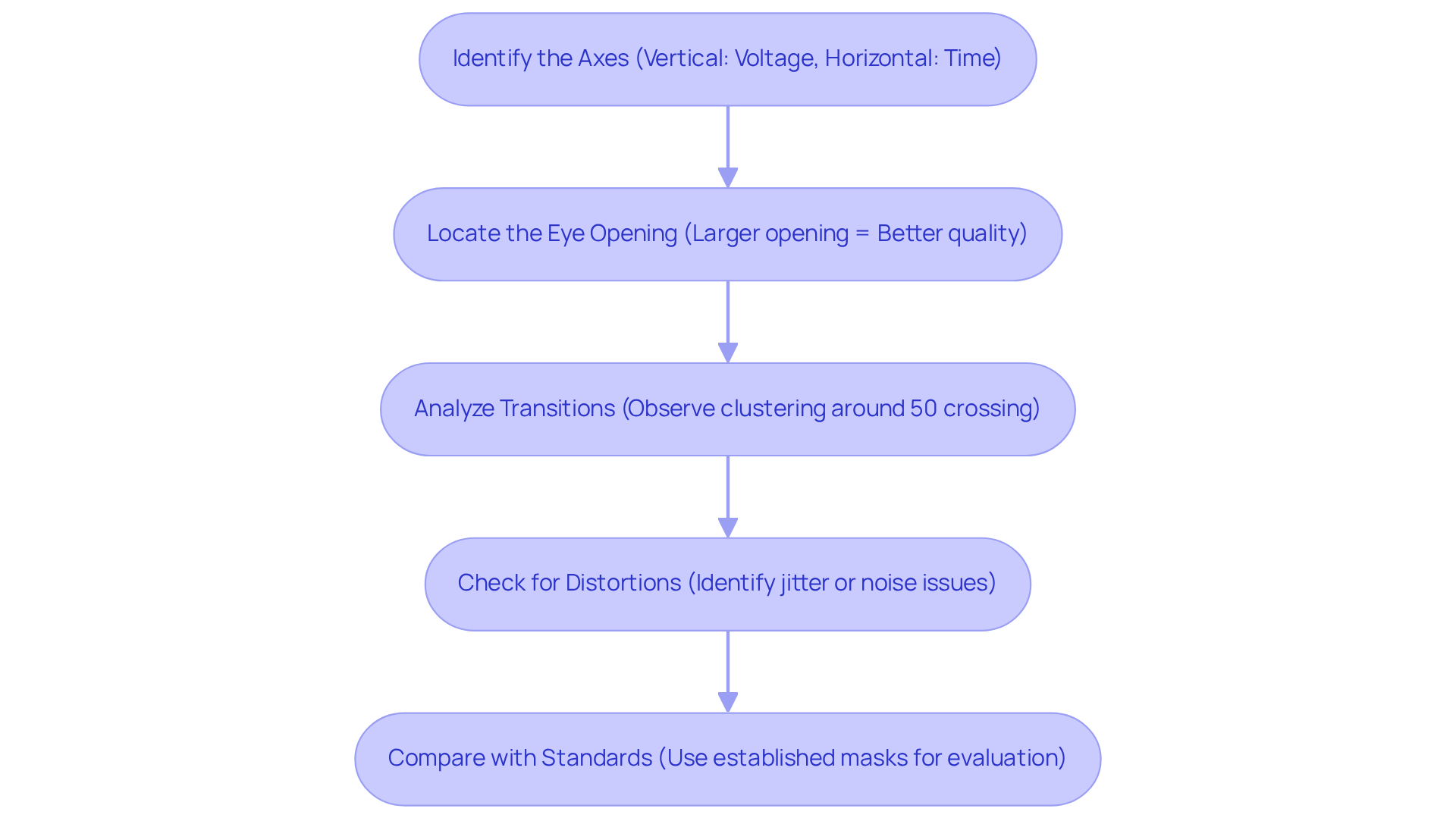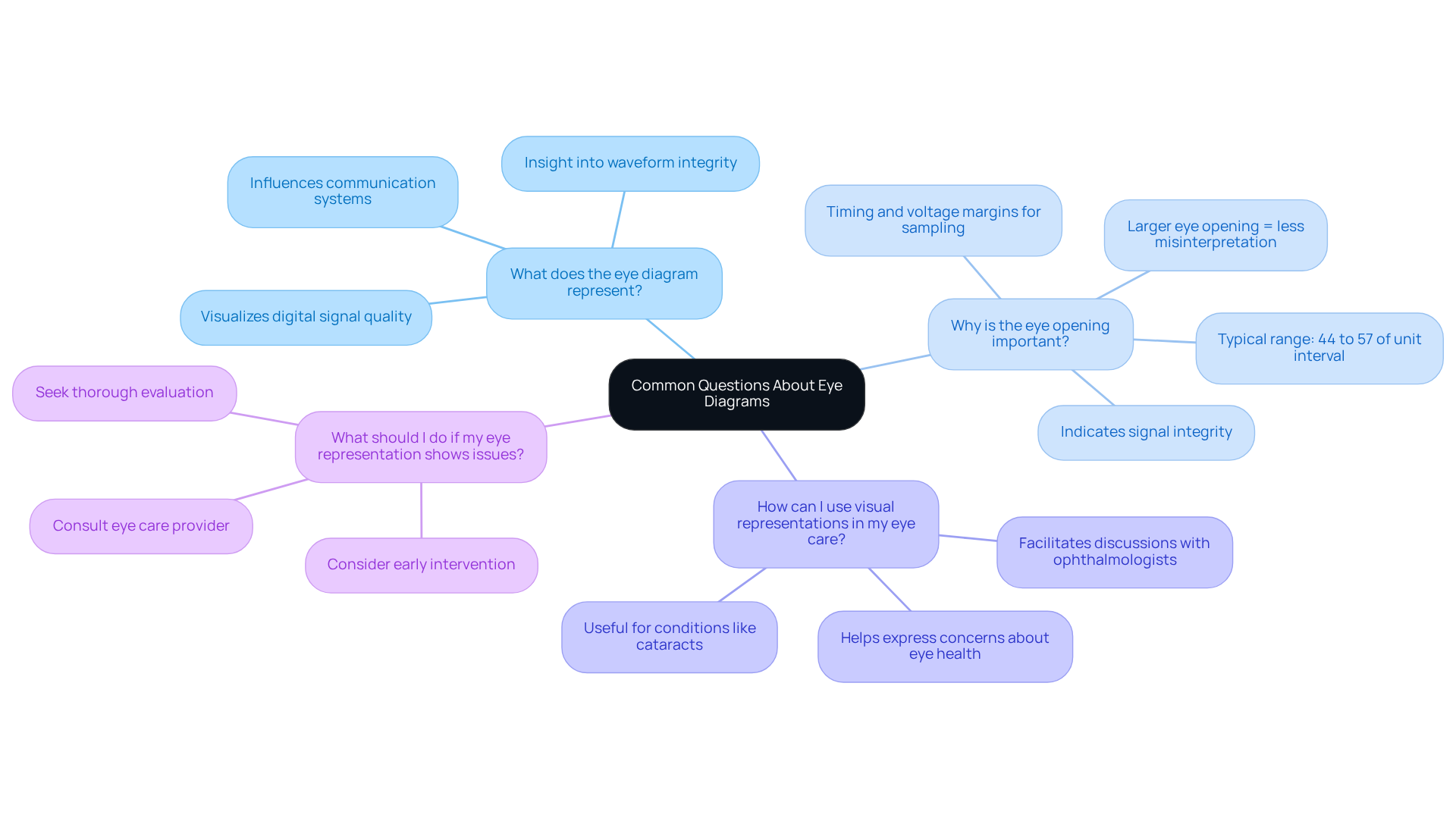Posted by: Northwest Eye in General on July 28, 2025
Overview
This article aims to help you effectively read and interpret eye diagrams, which are essential tools for understanding your eye health and the anatomy of your eyes. We understand that navigating medical information can be overwhelming, so we will guide you through specific steps for analysis. This includes:
- Identifying axes
- Checking for distortions
Eye diagrams play a crucial role in facilitating informed discussions between you and your healthcare provider, ultimately improving your outcomes. We are here to help you through this process.
Introduction
Understanding the intricate workings of the human eye can often feel like navigating a complex maze. We understand that when confronted with the technicalities of eye diagrams, it can be overwhelming. These visual tools not only illuminate the anatomy of the eye but also serve as crucial guides in assessing eye health and understanding various conditions. By mastering the art of reading and interpreting these diagrams, you can empower yourself to engage more effectively with healthcare providers. This fosters informed discussions about your vision.
But what happens when the diagrams reveal potential issues? It’s common to feel uncertain. How can you decipher the signals and make sense of the complexities that lie within? We are here to help you through this process.
Define Eye Diagrams and Their Importance in Eye Health
A diagram of eye serves as a graphical representation that illustrates the various components and functions of the eye. They serve as crucial instruments in both educational and clinical environments, helping individuals and healthcare providers visualize intricate anatomical structures and their connections. We understand that comprehending can be essential for recognizing how different sections of the eye contribute to overall vision and eye wellness. For instance, these illustrations can highlight areas affected by conditions like cataracts or glaucoma, making them invaluable for educating individuals and discussing treatment options.
In the context of eye health, a diagram of eye can clarify the anatomy of the eye, helping individuals to better understand their conditions and the importance of regular eye examinations. It’s common to feel overwhelmed when faced with health concerns, but this understanding can lead to more informed discussions between patients and their healthcare providers. Ultimately, this connection enhances patient outcomes and satisfaction, and we are here to help you through this process.

Explore the Anatomy of the Eye Relevant to Diagrams
The human eye consists of several essential components, each one vital for effective vision. We understand that learning about these structures can feel overwhelming, but knowing them can empower you. These key elements include:
- Cornea: The transparent front layer that refracts light, aiding in focus.
- Lens: Adjusts curvature to focus on objects at varying distances.
- Retina: Houses photoreceptor cells that transform light into neural signals for the brain.
- Optic Nerve: Carries visual information from the retina to the brain for processing.
- Iris and Pupil: Regulate the amount of light entering the eye, adapting to different lighting conditions.
Visual representations, like a , serve as important resources for illustrating these elements, often identifying each structure to enhance your understanding. For instance, an illustration may depict the journey of light as it travels through the cornea and lens before reaching the retina, effectively demonstrating the visual pathway. Familiarity with these anatomical features can help you interpret the diagram of the eye more easily and appreciate its significance in relation to various eye conditions.
The prevalence of eye conditions such as cataracts and glaucoma highlights the importance of understanding eye anatomy. Approximately 17.2% of Americans over 40 have cataracts, with projections indicating that this number will exceed 30 million by 2028. Glaucoma, particularly primary open-angle glaucoma, affects millions, with estimates suggesting a rise to 7.32 million cases by 2050, shifting from non-Hispanic white women to Hispanic men as the largest demographic group affected. Recognizing the key components of the eye can facilitate early detection and intervention, which are critical in preventing vision loss. As ophthalmologists emphasize, comprehending these structures is essential for both you and healthcare providers in managing eye health effectively. Moreover, resources like the Eye Condition Library and symptom checkers provided by Northwest Eye empower you to take an active role in your eye health.

Follow Steps to Read and Interpret Eye Diagrams
To effectively read and interpret eye diagrams, we encourage you to follow these steps:
- Identify the Axes: We understand that navigating these diagrams can be challenging. In the diagram of eye, the vertical axis typically represents voltage or amplitude, while the horizontal axis represents time.
- Locate the eye opening: The ‘eye’ in the diagram of eye is the area where the transition points occur. A larger eye opening suggests improved quality of the transmission, which can be reassuring.
- Analyze Transitions: It’s common to feel overwhelmed by the details. Observe how the transitions occur between different levels, looking for clustering around the 50% crossing level, which indicates optimal performance.
- Check for Distortions: Identifying any distortions or irregularities in the eye shape is crucial. These may indicate issues such as jitter or noise, and recognizing them can help address potential concerns.
- Compare with Standards: We recommend using established standards or masks to evaluate the quality of the eye diagram. This comparison can assist in assessing if the transmission meets required specifications, providing peace of mind.
By following these steps, you can gain a clearer understanding of the quality of vision and potential issues affecting eye health as shown in the diagram of eye. Remember, we are here to help you through this process, making you a more informed participant in your eye care.

Address Common Questions and Concerns About Eye Diagrams
Common questions and concerns about eye diagrams include:
- What does the eye diagram represent?
We understand that navigating the complexities of eye health can be daunting. The diagram of the eye visually illustrates the quality of a digital signal, providing insight into how effectively the signal can be interpreted by a receiver. This representation is essential for comprehending waveform integrity, which directly influences communication systems. - Why is the eye opening important?
It’s common to feel uncertain about technical terms. A larger eye opening signifies superior signal integrity, indicating that the signal is less prone to misinterpretation. This trait is essential for guaranteeing , as it indicates the timing and voltage margins required for precise sampling. Typically, the eye opening varies from approximately 44% to 57% of the unit interval, underscoring its significance in digital data integrity. - How can I use visual representations in my eye care?
We want you to feel empowered in your conversations with healthcare providers. Familiarity with the diagram of the eye can facilitate meaningful discussions with your ophthalmologist, especially if you have conditions that may influence signal processing in the eye, such as cataracts. By understanding these illustrations, you can more effectively express your concerns and inquiries about your eye health. - What should I do if my eye representation shows issues?
If an eye diagram reveals potential problems, we encourage you to consult your eye care provider for a thorough evaluation and possible treatment options. Early intervention can significantly enhance outcomes and address any underlying issues.
By addressing these common concerns, we hope you feel more empowered to engage with your eye care professionals and make informed decisions about your eye health.

Conclusion
Understanding the diagram of the eye is crucial for anyone looking to enhance their knowledge of eye health and vision. These diagrams not only illustrate the intricate anatomy of the eye but also serve as essential tools for both patients and healthcare providers in navigating complex eye conditions. By mastering how to read and interpret these diagrams, you can engage in more informed discussions about your eye health, ultimately leading to better outcomes and greater satisfaction with your care.
Throughout the article, we explored key components of the eye, such as the cornea, lens, retina, and optic nerve, highlighting their roles in maintaining vision. It’s important to recognize eye conditions like cataracts and glaucoma, along with the necessity of regular eye examinations. We also provided practical steps for interpreting eye diagrams, enabling you to analyze signal integrity and understand the implications of your findings. Addressing common questions and concerns empowers you to take an active role in your eye care journey.
In conclusion, the significance of eye diagrams extends beyond mere illustrations; they are vital for fostering communication between you and your healthcare provider. By leveraging these visual tools, you can demystify your eye health, leading to proactive management and early intervention when necessary. Embracing this knowledge paves the way for healthier vision and a deeper understanding of the complex yet fascinating world of eye anatomy.
Frequently Asked Questions
What is an eye diagram?
An eye diagram is a graphical representation that illustrates the various components and functions of the eye, serving as an important tool in both educational and clinical settings.
Why are eye diagrams important for eye health?
Eye diagrams help individuals and healthcare providers visualize intricate anatomical structures and their connections, which is essential for understanding how different sections of the eye contribute to overall vision and wellness.
How can eye diagrams assist in understanding eye conditions?
These illustrations can highlight areas affected by conditions like cataracts or glaucoma, making them invaluable for educating individuals about their conditions and discussing treatment options.
How do eye diagrams enhance patient-provider communication?
By clarifying the anatomy of the eye, eye diagrams help individuals understand their conditions better, leading to more informed discussions with healthcare providers and ultimately improving patient outcomes and satisfaction.
What role do eye diagrams play in patient education?
They serve as a crucial educational tool that can alleviate feelings of overwhelm when faced with health concerns, promoting a better understanding of the importance of regular eye examinations.






